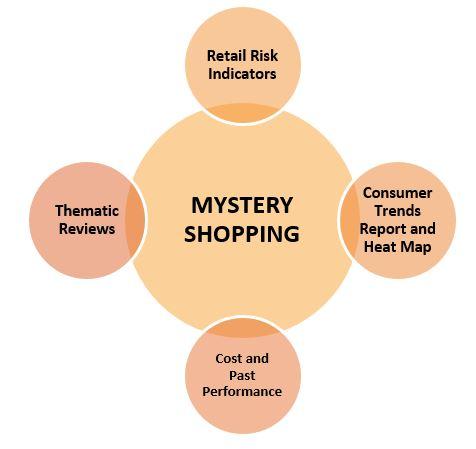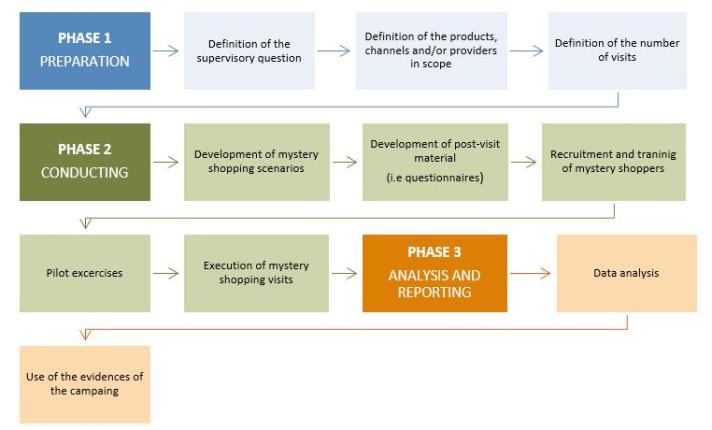In January 2020, EIOPA received a new mandate to coordinate mystery shopping activities. Hence, EIOPA and its members have been taking a gradual approach towards this coordination mandate.
What is mystery shopping?
Mystery shopping is a technique that involves the use of trained individuals, known as “mystery shoppers”, to experience and measure key phases of a product’s lifecycle by acting as (potential) customers and reporting back the experience. This may involve physical visits to distributors’ premises and remote activities via digital channels, phone calls or similar methods.
“Mystery shoppers” perform tasks that any potential customer might carry out (i.e. ask for information about product features, request for advice, etc.). While doing so, they gather detailed information on how providers sell their products or provide services to consumers in order to report ‘live’ observations on consumers’ outcomes in a structured, detailed and systematic manner.
How could mystery shopping enhance existing conduct of business supervision?
Collecting information from point-of-sale interactions, whether these take place face-to-face or digitally, informs supervisors on consumers’ experience and reinforces their understanding of how fair and transparent selling processes are from a consumer protection standpoint.
Mystery shopping visits allow a close monitoring of providers’ practices and alert supervisors on whether such practices are detrimental to consumers. It allows to take an outcome-focused approach to conduct of business supervision.
The main objectives of mystery shopping are:

What consumer protection issues can be explored via mystery shopping?
Mystery shopping gives particular insights on consumer risks arising in the product delivery phase as part of the interaction between consumers and distributors at the point of sale.
Besides the benefits emerging from the use of mystery shopping in relation to distribution, this supervisory tool could be also valuable when assessing other areas of risk associated to the way that manufacturers’ structure, drive and manage their business and how products are targeted to consumers.
Do mystery shopping campaigns fit into the existing supervisory tools?
Mystery shopping can be used in conjunction with other supervisory tools in order to exploit synergies amongst them. Indeed, mystery shopping provides information that supports either the detection of conduct issues or allows for deep investigations of those which are already of concerns.
Other supervisory tools could enhance the definition of area(s) of focus of potential mystery shopping exercises (i.e. using intelligence or data emerging from regular market monitoring), while mystery shopping could fill gaps of other tools or help in the assessment of findings arising from other tools.
Mystery shopping in relation to other matrket monitoring and supervisory tools:

How does a mystery shopping campaign work?
Mystery shopping campaigns are composed of diverse activities starting from the definition of the topic to investigate and concluding with the analysis of the data and respective reporting of the collected results.
Steps to perform mystery shopping activities:
